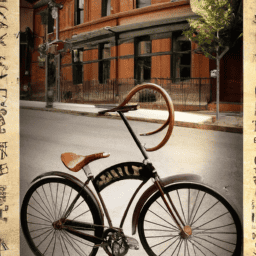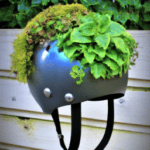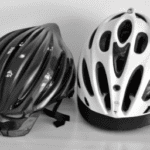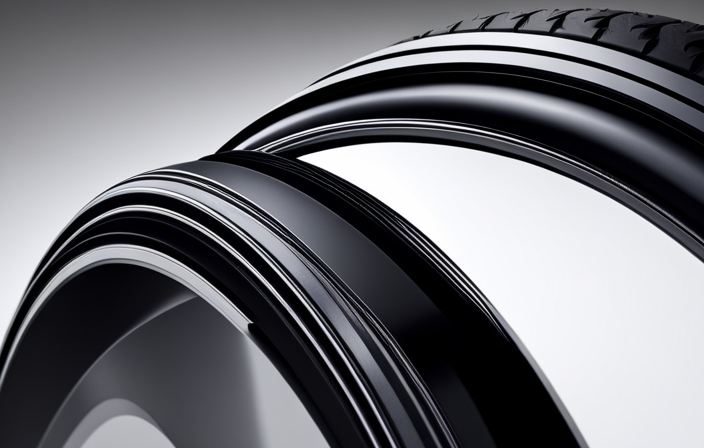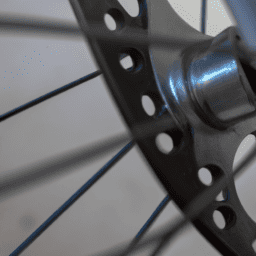As someone who is passionate about biking, I always aim for my equipment to match the aesthetic. Though a regular bike helmet serves its purpose in providing safety, it often lacks excitement. This is the reason I chose to customize my helmet with a unique paint design.
But before I started, I made sure to do my research on how to properly paint a bicycle helmet to ensure that it would still provide the necessary protection.
It’s important to note that not all helmets are compatible with painting. Some helmets have a protective coating or adhesive that can be damaged by paint or solvents. Before beginning any painting project, make sure to check your helmet’s compatibility with painting.
Once you’ve confirmed that your helmet can be painted, it’s time to gather the necessary materials and prepare for the painting process.
Key Takeaways
- Proper research is important to ensure the helmet still provides necessary protection.
- Choose paint colors for visibility and contrast to other road users.
- Use non-toxic and helmet-specific paints and primers.
- Applying clear coat can protect the helmet’s paint and make it look more vibrant and glossy.
Check Your Helmet’s Compatibility with Painting
Before you start, make sure your helmet’s material is compatible with painting so you don’t compromise its safety. Not all helmet materials can be painted, and some may react negatively to certain paint types. Check the manufacturer’s instructions or consult with a professional to determine if your helmet can be painted.
The last thing you want is to weaken your helmet’s protective qualities by altering its material with paint. Helmet safety is of utmost importance, so it’s crucial to take the necessary precautions before attempting to paint it.
If your helmet is compatible with painting, ensure that you follow all safety guidelines and use only paint that is safe for your helmet’s material. Once you’ve determined that your helmet can be painted, it’s time to gather the necessary materials and get started.
Gather the Necessary Materials
First things first, you’ll need to grab all the things you need to get your headgear looking like new. When it comes to painting a bicycle helmet, choosing the right paint colors is important.
You want to make sure that the colors you choose are not only visually appealing, but also provide good visibility and contrast to other road users. Bright colors like yellow, orange, and neon green are popular choices for helmets as they can be easily seen from a distance. If you prefer a more subtle look, opt for pastel shades or metallic finishes.
Safety precautions should also be taken when selecting your painting materials. It’s important to use paints and primers that are specifically designed for use on helmets. These paints are formulated to be lightweight and flexible, ensuring that they adhere well to the helmet surface without cracking or chipping.
Always choose paints that are non-toxic and free from harmful fumes, and work in a well-ventilated area. With the right materials and safety precautions, you can ensure that your helmet will look great and provide the necessary protection when you hit the road.
Now that you have all the necessary materials, it’s time to prepare your helmet for painting.
Prepare Your Helmet for Painting
Ready to revamp that protective headpiece? The first step in preparing your helmet for painting is to ensure that it’s clean and free of debris. Cleaning techniques can vary depending on the material of your helmet, but generally, you can use a mild detergent and warm water to gently scrub away any dirt or grime. Be sure to avoid using any harsh chemicals or abrasive materials that could damage the surface of your helmet.
Let it dry completely before moving on to the next step. Once your helmet is clean and dry, you can start thinking about some helmet customization ideas. This is the fun part where you can let your creativity shine! Some popular options include adding stickers or decals, painting designs or patterns, or even using stencils to create a unique design.
Whatever you choose, make sure it’s safe and won’t interfere with your helmet’s ability to protect your head. With your helmet now prepped and ready to go, it’s time to move on to the next section and start painting!
Paint Your Helmet
Transforming your helmet into a unique and stylish accessory is a great way to showcase your personality and stand out from the crowd.
Before beginning the painting process, it’s important to have a clear idea of what design inspiration you’d like to incorporate into your helmet. Whether it’s a bold color scheme, intricate patterns, or a simple logo, take the time to plan out your design before putting paint to the helmet.
When it comes to painting your helmet, safety considerations should always come first. It’s important to use a paint that is both durable and safe for use on helmets. Look for paints specifically designed for use on plastics, and avoid using paints that contain harsh chemicals or solvents that could compromise the integrity of the helmet material.
With safety in mind, take your time and apply thin coats of paint, allowing each layer to dry thoroughly before adding another.
Once your helmet is painted, you can move on to the next step of finishing and protecting your creation.
Finish and Protect Your Helmet
Now that I’ve painted my helmet, it’s important to properly finish and protect it.
First, I’ll need to let the helmet dry completely before handling it.
Once it’s dry, I’ll apply a clear coat to protect the paint and add a glossy finish.
Finally, I’ll reattach any removed parts, such as vents or visors, to ensure the helmet is fully functional and safe for use.
Taking these steps will help ensure that my painted helmet looks great and provides the necessary protection while riding.
Let the Helmet Dry
As you wait for the helmet to dry, feel free to take a break and grab a refreshing beverage. Drying techniques are important to ensure your helmet is completely dry before adding any additional coats.
You can let the helmet air dry or use a hairdryer on a low, cool setting to speed up the process. Helmet maintenance is crucial in ensuring the helmet remains durable and safe for future use.
During the drying process, it’s important to keep in mind that the helmet should not be placed in direct sunlight or high heat. This can potentially damage the helmet and compromise its integrity.
Once the helmet is completely dry, it’s time to add a clear coat to further protect the paint and maintain the helmet’s overall condition.
Add a Clear Coat
To ensure your headgear stays in top condition, it’s crucial to apply a clear coat once the helmet is completely dry. Clear coat provides a protective layer that shields the helmet’s paint from scratches, UV rays, and other external factors that can damage the helmet’s surface. Applying a clear coat can also make the helmet’s paint look more vibrant and glossy.
When applying the clear coat, it’s essential to do it evenly to prevent drips or uneven surfaces. The best way to do this is to use a spray can and hold it about 10 inches away from the helmet’s surface. Start spraying in a sweeping motion, moving the can from side to side to cover the entire surface.
Apply a thin layer first, then let it dry for about 20 minutes before adding another coat. Repeat the process until you have a smooth and even coat. Once you’ve finished adding the clear coat, proceed to reattach any removed parts to your helmet.
Reattach Any Removed Parts
Don’t forget to put back all the pieces of your newly customized headgear, giving it that final touch that will make it feel complete and ready for your next adventure!
Before you do so, make sure that the helmet is completely dry and the clear coat has fully cured. Once you’re certain that it’s ready, you can start reattaching any removed parts such as the straps and padding.
When reattaching straps, make sure that they are secure and snug but not too tight that they cause discomfort. Check to see if they are properly aligned with the helmet’s ventilation holes and adjust accordingly.
As for the padding, replace any damaged or worn out pieces and make sure that they are properly aligned with the helmet’s interior. Remember that these parts play a crucial role in ensuring your safety while cycling, so it’s important to take the time to properly reattach and replace them.
Frequently Asked Questions
Can I use any type of paint on my bicycle helmet?
I wouldn’t recommend using just any type of paint on your bicycle helmet. Safety is important, so I suggest researching painting techniques and color options that are safe for helmets. Always prioritize your safety when customizing your gear.
How long should I wait before using my newly painted helmet?
After painting my helmet, I waited at least 24 hours before wearing it. Proper helmet fitting is crucial for safety, so I checked the straps and adjusted them accordingly. Regular helmet maintenance is also important to ensure maximum protection.
Will painting my helmet affect its safety rating?
Customizing a helmet may affect its safety rating. Paint should not compromise the helmet’s structural integrity. Always check that the paint used meets helmet safety standards and has been applied properly.
Do I need to remove all the stickers and decals before painting my helmet?
Sticker removal is key to prepping a helmet for painting without sacrificing safety. I recommend carefully removing all decals and stickers before proceeding. For custom designs, try using stencils and patterns to express personal style while still ensuring helmet safety.
Can I paint a helmet with a visor or should I remove it first?
I suggest removing the visor before painting the helmet to avoid any potential mistakes. Once removed, ensure the surface is clean and dry before applying paint. Visor painting tips: use tape to protect it from overspray. Safety first!
Conclusion
Well, I did it. I painted my bicycle helmet. And you know what? It looks pretty darn cool.
But before you go running off to paint your own helmet, let me share a little bit of irony with you. As I was preparing to paint my helmet, I was reading all of these safety warnings about how painting your helmet could weaken it and compromise its ability to protect your head. And yet, here I was, about to do just that.
But don’t worry, I did my research and made sure my helmet was compatible with painting before I embarked on this little project. So, if you’re thinking about painting your own helmet, make sure you do your homework first.
And if you’re not sure whether your helmet is compatible with painting, it’s probably best to err on the side of caution and leave it as is. After all, safety should always come first when it comes to protecting your head while riding your bike.

